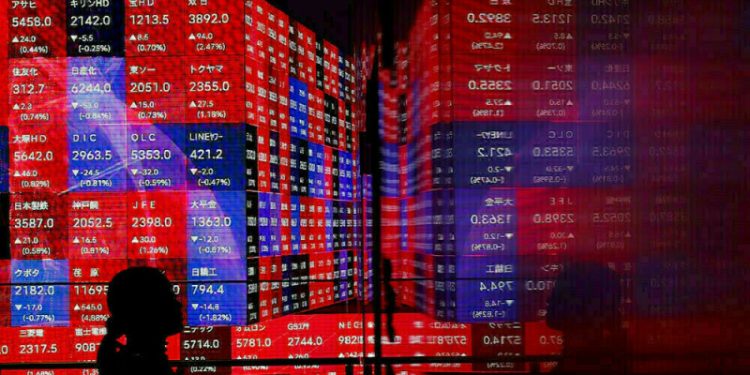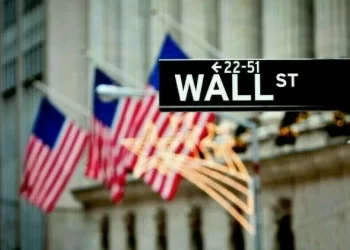SYDNEY: Asia shares fell on Friday as a strong dollar kept risk sentiment fragile, while longer-dated Treasury yields are heading for their biggest weekly rise this year as expectations for deep US rate cuts in 2025 recede.
A top level meeting in Beijing pledged to increase debt and boost consumption but failed to boost Chinese equity markets.
Policymakers are girding for more trade tensions with the US as Donald Trump’s return to power approaches. It has been a week of rate cuts from Switzerland, Canada and the European Central Bank, which had rate differentials working in the favour of the US dollar.
The other main point of the week has been the rise in long-term treasury yields.
Markets are still confident of a cut from the Federal Reserve next week but suspect it will sound cautious about next year.
Futures imply little chance of a move in January, with just two more easings priced in to 3.8% by end-2025.
Thirty-year yields have jumped 22 basis points so far this week, their biggest since October 2023.
In contrast, rates in Europe are seen at 1.75% compared with 3% currently, while those for Canada are expected to fall from 3.25% to 2.7% by then.
MSCI’s broadest index of Asia-Pacific shares outside Japan slipped 0.5% in Friday morning trade.
Japan’s Nikkei fell 1% but is still on track for a weekly gain of 0.9%.
China’s blue chips dropped 0.7% and Hong Kong’s Hang Seng lost 1.2% after the Central Economic Work Conference did not offer details on new stimulus measures.
Asia stocks rally on Fed cut bets; Aussie jumps on jobs data
A subindex of Chinese property firms listed in Hong Kong slid 2.6%.
Jian Chang, chief China economist at Barclays, said the CEWC likely disappointed markets as a Dec. 9 Politburo statement had raised hopes of more aggressive easing.
“We maintain our view that incremental and reactive policy is more likely than pre-emptive and ‘bazooka’ policy,” he said.
On Wall Street, stocks closed lower overnight as some investors booked profits from the Nasdaq’s relentless run to record highs.
That said, Nasdaq futures rose 0.4% in Asia. Data on US producer prices came out a little hotter than expected in November at 0.4% but that was due to a 50% jump in egg prices.
The core reading was softer and led Goldman Sachs to lower their forecast for the Fed’s prefered gauge of inflation – the core personal consumption expenditures price index due next week – to a monthly rise of 0.13%.
In the foreign exchange market, the dollar is on track for a weekly jump of 1% against its peers.
It gained 1.8% on the Japanese yen this week as markets scaled back the chance of a rate hike from the Bank of Japan next week to just 22%.
Sources said the BOJ is leaning towards keeping rates steady.
The dollar also rose 1.6% on the swiss franc to 0.8919, just within a whisker of a five-month high of 0.8957, after the Swiss National Bank surprised economists by cutting by 50 basis points.
Treasuries were steady on Friday but headed for heavy weekly losses across the curve.
The two-year yield rose 9 basis points to 4.1906%, while the ten-year benchmark yield jumped 17 bps to 4.3219%.
Oil prices edged lower on Friday, but were set for decent weekly gains after the European Union agreed to new round of sanctions threatening Russian oil flows.
US West Texas Intermediate (WTI) eased 0.1% to $69.95 a barrel and is up 4% this week.
Gold gained 2% this week to $2,690.21 per ounce, still some distance from its record of $2,790.









